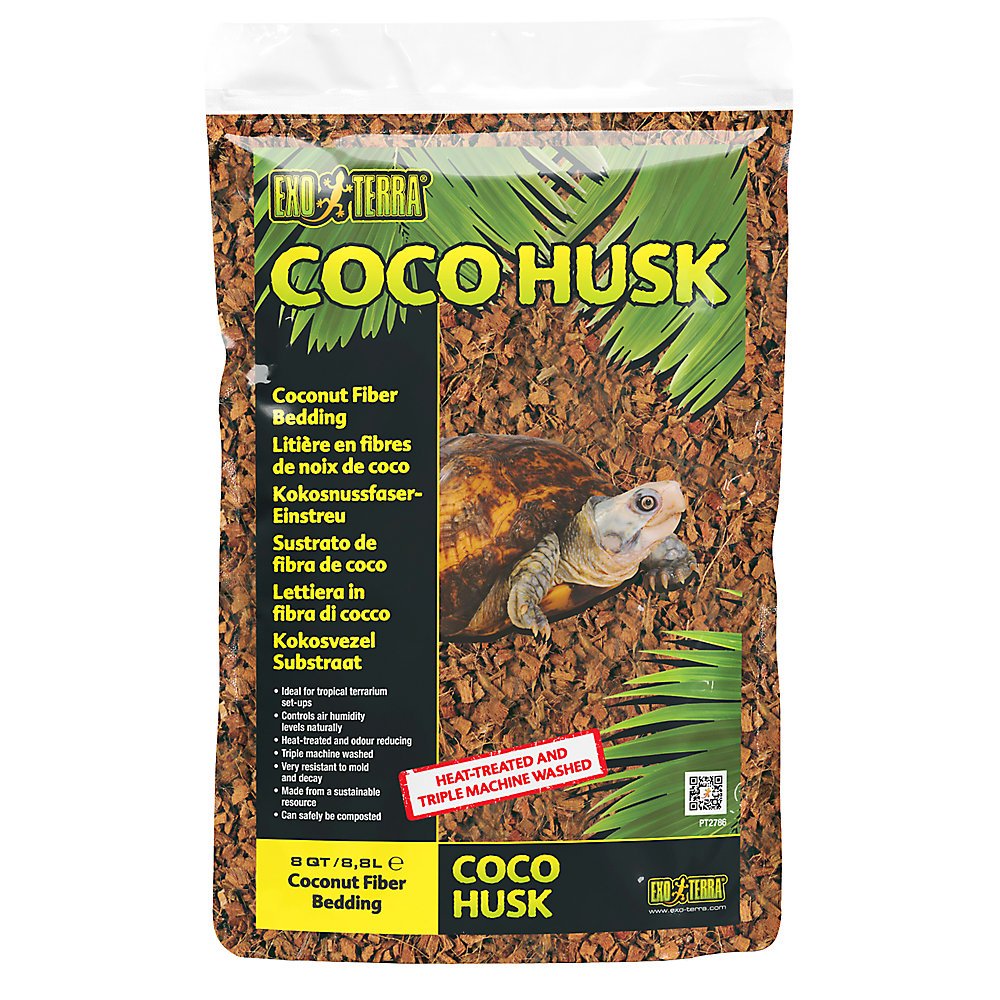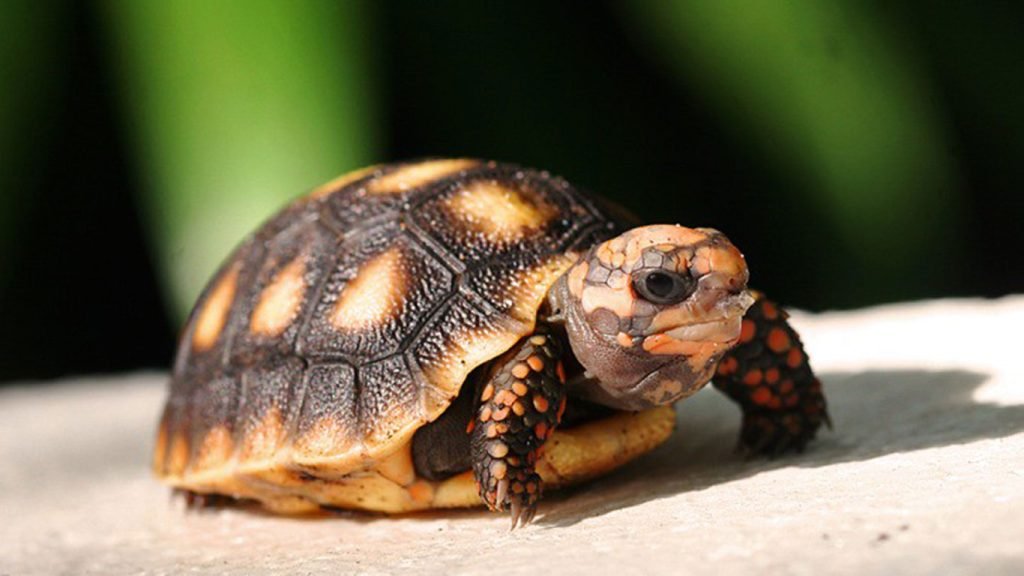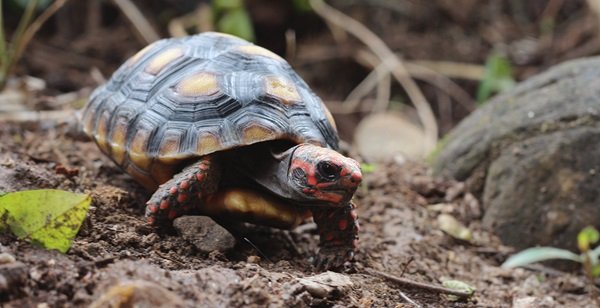Red-footed tortoises require a suitable substrate to create a healthy and comfortable habitat. Choosing the right red foot tortoise substrate is crucial for their well-being. The best substrate options for red-footed tortoises include cypress mulch, spagnum moss, and coco-coir.
These substrates provide the necessary humidity and allow for burrowing, mimicking their natural habitat. It is important to keep the substrate moist and to spray it with water regularly to maintain the desired humidity levels.
Core Insights to Red Foot Tortoise Substrate Picks & Tips
General Care Guidelines for Red Foot Tortoises
If you’re considering bringing a red foot tortoise into your home, it’s essential to understand their specific care requirements. From the right habitat to maintaining proper temperature and humidity levels, providing the best care for your red foot tortoise is crucial for their overall health and well-being.
Red-footed tortoises need to be housed in an enclosure that offers enough space for them to move around comfortably. The enclosure should be spacious and include essential elements such as a water bowl, hiding spots, and enrichment items. This will allow your tortoise to exhibit their natural behaviors and feel secure in their environment.
Maintaining the correct temperature inside the enclosure is also essential. Red foot tortoises thrive in temperatures around 80 degrees Fahrenheit, with a basking spot that reaches 90-95 degrees Fahrenheit. This temperature gradient allows them to regulate their body temperature and aids in digestion.
Humidity levels are another critical aspect of red foot tortoise care. These tortoises come from regions with high humidity, so it’s essential to mimic their natural habitat. Aim for humidity levels between 80-90% inside the enclosure. This can be achieved by regular misting and the use of proper substrate that holds moisture well.
Lastly, providing adequate lighting, including UVB, is crucial for their overall health and well-being. UVB helps red foot tortoises metabolize calcium and aids in shell development. Ensure that your tortoise has access to appropriate UVB lighting to prevent deficiencies.
By following these general care guidelines, you can create a suitable habitat for your red foot tortoise and promote their overall health and happiness.
Indoor Housing for Red Foot Tortoises
When it comes to housing your red-footed tortoise indoors, you have several options to choose from. The most common ones are Rubbermaid plastic containers and tortoise tables. These enclosures provide a safe and secure environment for your tortoise to thrive.
For hatchling tortoises, a 3×2 enclosure is a good starting point. As your tortoise grows, you will need to provide a larger space to accommodate its size.
Proper heating and lighting setup is crucial in an indoor enclosure. You should have a heat lamp or ceramic heater to provide the necessary warmth. A basking spot with a temperature range of 90-95 degrees Fahrenheit is essential for your tortoise’s thermoregulation.

Join Our GeoZoo Family
Subscribe to our Newsletter
Additionally, you need to ensure that the humidity levels are maintained within the required range. The enclosure should have a substrate that can hold humidity, such as cypress mulch or spagnum moss. Regular misting of the enclosure will help maintain the desired humidity level.
Creating a comfortable and enriching environment is also important. Provide hiding spots, rocks, and branches for your tortoise to explore. These decorations will stimulate their natural behaviors and make their habitat more interesting.
Table: Suitable Enclosures for Red Foot Tortoises
| Enclosure Type | Pros | Cons |
|---|---|---|
| Rubbermaid Plastic Container | – Easy to clean – Lightweight and portable – Secure | – Limited visibility – May require modification for proper ventilation |
| Tortoise Table | – Provides a naturalistic environment – Allows for easier observation – Customizable | – Requires more space – May be more expensive |

Outdoor Housing for Red Foot Tortoises
Red-footed tortoises can also be housed outdoors if the climate permits. It provides them with a more natural environment to thrive in. Outdoor enclosures should be fully enclosed to protect the tortoises from predators and ensure their safety. The enclosure should offer ample space for the tortoise to roam and explore, allowing them to exhibit their natural behaviors.
To create a suitable outdoor habitat for red foot tortoises, it is important to consider their natural habitat as a reference. Mimicking their natural environment helps promote their well-being. Provide the necessary heating and lighting to replicate their natural climate and ensure they can thermoregulate properly.
It is recommended to use a substrate in the outdoor enclosure that can hold moisture and provide a suitable digging surface. This allows the tortoise to engage in their natural burrowing behavior. Cypress mulch or spagnum moss are viable options for the substrate.
Moreover providing a suitable habitat, it is important to offer hiding spots and enrichment items to keep the tortoises mentally stimulated. This can include rocks, logs, and plants within the enclosure. Creating a stimulating environment encourages natural behaviors and promotes a healthy and happy tortoise.
Remember to regularly monitor the enclosure and make adjustments as necessary. Pay attention to the temperature, humidity, and cleanliness to ensure the tortoise’s well-being. Regularly inspect the enclosure for any signs of wear or damage that may compromise the tortoise’s safety.
Creating an outdoor housing setup for your red foot tortoise provides them with the opportunity to experience a more natural habitat and thrive in a larger space. Consider the specific climate requirements and provide all the necessary elements to mimic their natural habitat effectively.
Substrate for Red Foot Tortoises
Choosing the right substrate for red-footed tortoises is essential for their overall well-being. The type of substrate you select can significantly impact their comfort and health. The following substrates are highly recommended for red-footed tortoises:
- Cypress Mulch: Cypress mulch is an excellent choice for red-footed tortoises due to its ability to retain moisture effectively. It provides a natural and suitable environment for the tortoises to dig and burrow. The texture of the mulch allows for easy movement and supports their natural behaviors.
- Sphagnum Moss: Sphagnum moss is another great option for red-footed tortoises. It holds moisture well and provides a soft and comfortable bedding for them. The tortoises can burrow into the moss, creating cozy hiding spots.
- Coco-Coir: Coco-coir, also known as coconut husk fiber, is a popular substrate choice for reptiles and amphibians. It retains moisture effectively and provides a suitable digging surface for red-footed tortoises. Coco-coir is also environmentally friendly and sustainable.
When setting up the substrate in the enclosure, ensure it is properly moistened. Regularly spraying the substrate with water helps maintain the desired humidity levels, which are crucial for red-footed tortoises’ health. Avoid using substrates that can be ingested or lead to impaction, such as sand or small particle substrates.

Eco-Friendly & Biodegradable Coconut Husk Fiber
Lighting and Temperature for Red Foot Tortoises
Proper lighting and temperature are crucial for the health and well-being of red-footed tortoises. These important factors play a significant role in their daily activities and overall physiological functions.
Red-footed tortoises require access to UVB lighting to ensure the proper absorption of calcium and vitamin D3. UVB lighting mimics the natural sunlight that they would receive in their native habitats, enabling them to synthesize essential vitamins and minerals. When positioning UVB bulbs in their habitat, ensure the proper distance based on the type of fixture used to provide adequate UVB exposure. This will help prevent deficiencies and support their overall growth and development.
It is crucial to provide a basking spot with temperatures ranging from 90 to 95 degrees Fahrenheit. This allows the tortoises to regulate their body temperature, aiding in digestion and promoting their overall well-being. A heat lamp or ceramic heat emitter can be used to create the required warmth in the basking area. Monitoring the temperature is vital to ensure consistency and avoid any extreme fluctuations that may stress the tortoises.
Remember to place a thermometer in their enclosure to regularly monitor the temperature and adjust if necessary. It is also essential to maintain a suitable ambient temperature throughout the enclosure, keeping it around 80 degrees Fahrenheit. Providing a temperature gradient with warmer and cooler areas allows the tortoises to move freely and thermoregulate as needed.
Creating an environment that offers the correct lighting and temperature not only promotes your red-footed tortoises’ overall health but also encourages natural behaviors and a sense of comfort.

Humidity Requirements for Red Foot Tortoises
Red-footed tortoises require high humidity levels to thrive. Proper humidity levels in their enclosure are essential for their overall health and well-being. The ideal humidity range for red-footed tortoises is between 70-90%.
Maintaining the correct humidity can be achieved through regular misting of the enclosure with water. Mist the enclosure at least once or twice a day to ensure the desired humidity levels are maintained.
It is recommended to use a hygrometer to monitor the humidity levels inside the enclosure. This device will help you determine if the humidity is within the appropriate range. Regular monitoring is crucial to ensure the humidity stays at optimal levels for your red-footed tortoise.
Providing a shallow water bowl in the enclosure can also help increase the humidity. The tortoise can drink from the bowl and the evaporation of the water will contribute to maintaining the humidity levels.
Another effective way to increase humidity is to create a humid hideout within the enclosure. This can be achieved by lining a hideout with moistened substrate or sphagnum moss. The tortoise can seek refuge in the humid hideout whenever it needs to increase its exposure to moisture.
Maintaining high humidity is crucial for the overall health and shell development of red-footed tortoises. Make sure to regularly monitor and adjust the humidity levels in their enclosure to provide them with a suitable and comfortable environment.
| Humidity Requirements for Red Foot Tortoises | Method |
|---|---|
| Misting the enclosure with water | Regular misting at least once or twice a day |
| Using a hygrometer | Regular monitoring to ensure humidity stays within the appropriate range |
| Providing a shallow water bowl | Contributes to increasing humidity through evaporation |
| Creating a humid hideout | Use moistened substrate or sphagnum moss to provide a refuge with increased moisture |

Decorations and Enrichment for Red Foot Tortoise Enclosures
Creating a stimulating environment for your red-footed tortoise is crucial to their overall well-being. By adding decorations and enrichment items to their enclosure, you can provide mental stimulation and prevent boredom. These enhancements can mimic their natural habitat and encourage natural behaviors.
Decorations:
When choosing decorations for your red foot tortoise’s enclosure, opt for items that are non-toxic and safe for them to interact with. Some suitable options include:
- Large hollow logs: A hollow log can serve as a hiding spot and provide a sense of security for your tortoise.
- Rocks: Rocks of various sizes and shapes can create interesting terrain and climbing opportunities for your tortoise.
- Live, edible plants: Consider adding safe, edible plants into the enclosure, as they provide a natural food source and add visual interest.
Hiding Spots and Burrows:
Red-footed tortoises require hiding spots and burrows to feel safe and secure. These hiding spots can be created using decorations such as logs or rock caves. Providing multiple hiding spots throughout the enclosure allows your tortoise to choose the one that suits them best.
Textures and Surfaces:
Adding various textures and surfaces to the enclosure can add complexity and enrichment. Consider including surfaces like flat rocks, wooden platforms, or branches for your tortoise to explore and navigate. This variety can help stimulate their senses and keep them engaged.
Cleaning and Maintenance:
Regularly clean and sanitize the decorations in your tortoise’s enclosure to maintain a hygienic environment. This will help prevent the buildup of bacteria or other harmful substances that could affect your tortoise’s health.
Final Remarks
Proper care for your red-footed tortoise includes selecting the right substrate, providing suitable housing, and maintaining optimal temperature and humidity levels. By choosing a substrate like cypress mulch or spagnum moss, you allow your tortoise to exhibit natural behaviors such as burrowing. Ensuring the temperature in their enclosure stays around 80 degrees Fahrenheit, with a basking spot reaching 90-95 degrees Fahrenheit, creates a comfortable environment for your tortoise. Equally important is maintaining humidity levels between 80-90% to mimic their natural habitat.
Don’t forget about lighting. Providing proper lighting, including UVB, is crucial for preventing deficiencies in your red-footed tortoise. UVB bulbs positioned at the appropriate distance ensure your tortoise receives adequate exposure. Additionally, the addition of decorations and enrichment items, such as hollow logs, rocks, and live plants, adds mental stimulation to their habitat.
By following these care tips and guidelines, you can provide the best possible living conditions for your red-footed tortoise. With the right substrate, suitable housing, optimal temperature and humidity levels, proper lighting, and an engaging environment, your tortoise will thrive and live a healthy, happy life.
FREQUENTLY ASKED QUESTIONS
What kind of substrate is best for red-footed tortoises?
The best substrate options for red-footed tortoises include cypress mulch, spagnum moss, and coco-coir. These substrates provide the necessary humidity and allow for burrowing.
How should I maintain the humidity in the red-footed tortoise enclosure?
It is important to keep the substrate moist and to spray it with water regularly to maintain the desired humidity levels. Providing a water bowl and proper lighting, including UVB, is also essential.
What is the recommended temperature for red-footed tortoises?
The temperature inside the enclosure should be maintained at around 80 degrees Fahrenheit, with a basking spot reaching 90-95 degrees Fahrenheit. This allows the tortoises to regulate their body temperature and aids in digestion.
What type of enclosure is suitable for indoor housing of red-footed tortoises?
Rubbermaid plastic containers or tortoise tables are commonly used for indoor housing. The size of the enclosure depends on the size of the tortoise, but a rough guideline is to provide a 3×2 enclosure for a hatchling tortoise.
Can red-footed tortoises be housed outdoors?
Yes, red-footed tortoises can be housed outdoors if the climate permits. They require a fully enclosed outdoor enclosure to protect them from predators and the enclosure should provide ample space for the tortoise to roam and explore.
What are the recommended substrates for red-footed tortoises?
The best substrates for red-footed tortoises include cypress mulch and spagnum moss. These substrates hold moisture well and provide a suitable digging surface. Avoid using substrates that can be ingested or cause impaction, such as sand or small particle substrates.
Why is proper lighting important for red-footed tortoises?
Red-footed tortoises need access to UVB lighting to ensure proper absorption of calcium and vitamin D3. The UVB bulbs should be positioned at the right distance, depending on the type of fixture used, to provide adequate UVB exposure.
How can I increase the humidity in the red-footed tortoise enclosure?
Regular misting of the enclosure with water helps maintain the desired humidity levels. Using a hygrometer to monitor the humidity is important to ensure it stays within the appropriate range. Providing a shallow water bowl and a humid hideout lined with moistened substrate or sphagnum moss also helps increase humidity levels.
What can I add to the red-footed tortoise enclosure for enrichment?
Adding decorations and enrichment items such as large hollow logs, rocks, and live, edible plants provides mental stimulation for red-footed tortoises. These items should be non-toxic and safe for the tortoises to interact with. Providing additional hiding spots and burrows, along with various textures and surfaces, adds complexity to the enclosure.
What are some important care tips for red-footed tortoises?
Proper substrate selection, maintaining optimal temperature and humidity levels, providing proper lighting, and adding decorations/enrichment items are essential for the well-being of red-footed tortoises. Following these care tips will ensure that your red-footed tortoise has a healthy and happy life.

